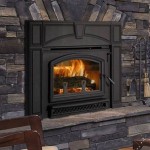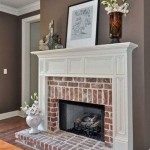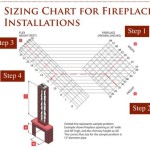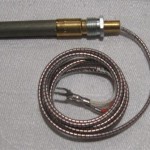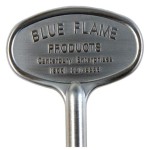Troubleshooting A Gas Fireplace
A gas fireplace offers a convenient and aesthetically pleasing heating solution for many homes. However, like any appliance utilizing gas and intricate mechanical components, problems can arise. Effectively troubleshooting common issues is crucial for maintaining a functional and safe gas fireplace. This article will explore prevalent problems encountered with gas fireplaces and provide a systematic approach to diagnosing and addressing them.
Pilot Light Issues
One of the most common issues with a gas fireplace is related to the pilot light. The pilot light is a small, continuous flame that ignites the main burner when heat is desired. A malfunctioning pilot light can manifest in several ways, including the pilot light refusing to light, extinguishing shortly after ignition, or burning with an unusual flame.
When the pilot light fails to ignite, the first step is to ensure the gas supply is active. Check the main gas valve leading to the fireplace and any shut-off valves along the gas line. If the gas supply is confirmed, examine the pilot light assembly for any debris or obstructions. Dust, spider webs, or other particulate matter can accumulate around the pilot light orifice, hindering gas flow and preventing ignition. A small brush or compressed air can be used to carefully clean the orifice. Be extremely cautious when manipulating components near gas lines.
If the pilot light ignites but extinguishes shortly after being lit, a faulty thermocouple or thermopile is a likely cause. The thermocouple is a safety device that generates a small electrical current when heated by the pilot light flame. This current keeps the gas valve open, allowing gas to flow to the main burner. If the thermocouple is defective, it will fail to generate sufficient current, causing the gas valve to close and the pilot light to extinguish. A thermopile performs a similar function but generates more electricity to power the main gas valve directly, often found in fireplaces without external power.
To test the thermocouple, a multimeter can be used to measure the millivolts (mV) being produced. Consult the fireplace manufacturer's specifications for the acceptable voltage range. If the thermocouple is producing insufficient voltage, it should be replaced. Before replacing the thermocouple, ensure the connection between the thermocouple and the gas valve is clean and secure, as a loose connection can also cause voltage drops. If the pilot light burns with a yellow or orange flame, it typically indicates incomplete combustion. Insufficient air mixing with the gas can be the culprit. Check the air intake vents around the burner and clean any blockages to improve airflow. The burner itself may require cleaning to remove soot or carbon deposits that can impede proper combustion.
Main Burner Problems
Beyond the pilot light, issues with the main burner can prevent the fireplace from providing heat. Common problems include the burner failing to ignite, producing a weak flame, or burning unevenly.
If the main burner fails to ignite even when the pilot light is functioning correctly, the problem likely lies with the gas valve or the igniter system. The gas valve controls the flow of gas to the main burner. A faulty gas valve may not open properly, preventing gas from reaching the burner. An igniter, whether a spark igniter or a hot surface igniter, is responsible for igniting the gas when the valve opens.
For spark igniters, check the electrode gap and ensure the electrode is clean. The gap should be within the manufacturer's specified range. A dirty electrode can prevent the spark from forming. If the igniter is producing a weak or no spark, the igniter module itself may be defective and require replacement. Hot surface igniters glow when heated and ignite the gas upon contact. If a hot surface igniter fails to glow, it is likely burned out and needs replacing.
If the main burner ignites with a weak flame, the gas pressure may be low, or the burner ports may be partially clogged. Low gas pressure can be a result of issues with the gas supply line or the gas regulator. This often requires professional evaluation and repair by a qualified gas technician. Partially clogged burner ports restrict gas flow and cause an uneven or weak flame. Carefully clean the burner ports with a wire brush or a small needle to remove any obstructions. Exercise caution to avoid damaging the burner ports.
Odor and Ventilation
Unusual odors emanating from a gas fireplace can indicate a serious problem. A strong gas odor suggests a gas leak, while other odors may signify incomplete combustion or ventilation issues.
Any suspected gas leak requires immediate attention. Shut off the gas supply to the fireplace and ventilate the area by opening windows and doors. Do not use any electrical devices, including lights or telephones, as they could create a spark and ignite the gas. Contact a qualified gas technician immediately to locate and repair the leak. A gas leak detector can be used to pinpoint the source of the leak. Soapy water can also be applied to gas line connections; bubbles will form in the presence of a leak.
A smoky or burning smell can indicate incomplete combustion or inadequate ventilation. Ensure the fireplace venting system is clear of obstructions. Birds' nests, debris, or collapsed vent pipes can block the flow of exhaust gases. Check the termination point of the vent on the exterior of the house for any blockages. Professional cleaning and inspection of the venting system is recommended annually.
New gas fireplaces may emit a slight odor during the initial burning period as the manufacturing oils and residues burn off. This odor should dissipate after several hours of operation. If the odor persists or is accompanied by other symptoms, such as headaches or nausea, it could indicate carbon monoxide poisoning. Install a carbon monoxide detector near the fireplace and ensure it is functioning correctly. If carbon monoxide is suspected, evacuate the premises and contact emergency services.

Reasons Your Gas Fireplace Isn T Working Experts

Gas Fireplace Troubleshooting Tips And Tricks Vertical Chimney Care

Trouble Shooting Tips So You Won T Be Stumped By Gas Fireplace Issues

Why Your Gas Fireplace Won T Light And How To Fix It

Troubleshooting A Gas Fireplace

Troubleshooting Gas Fireplace Issues Amarillo Tx West Chimney

Gas Fireplace Keeps Shutting Off Here S What You Can Do

Home Improvement Maintenance Troubleshooting A Gas Fireplace

Gas Fireplace Won T Stay Lit Magic Touch Mechanical

Troubleshooting Gas Fireplace Issues On Your Own
Related Posts

